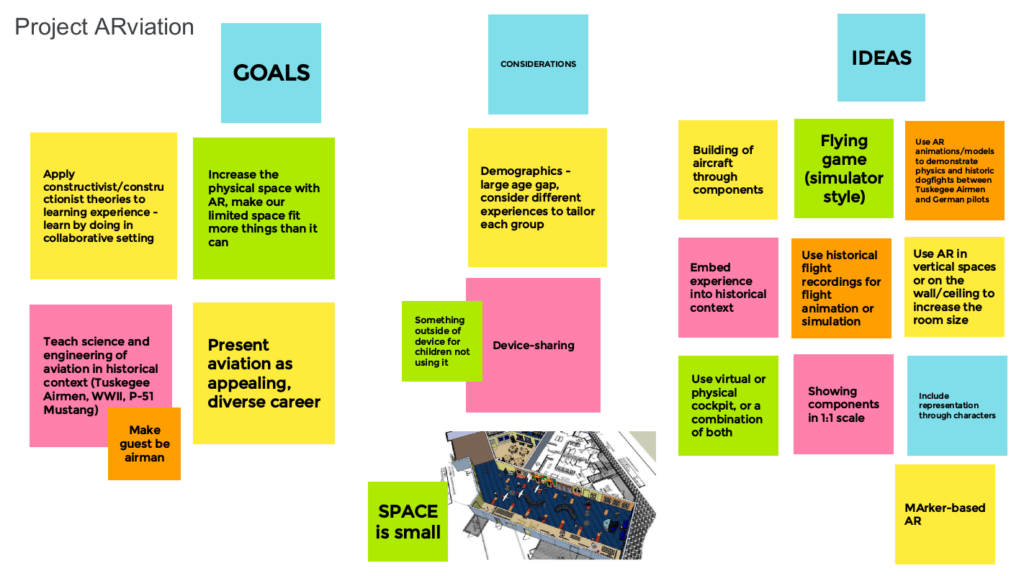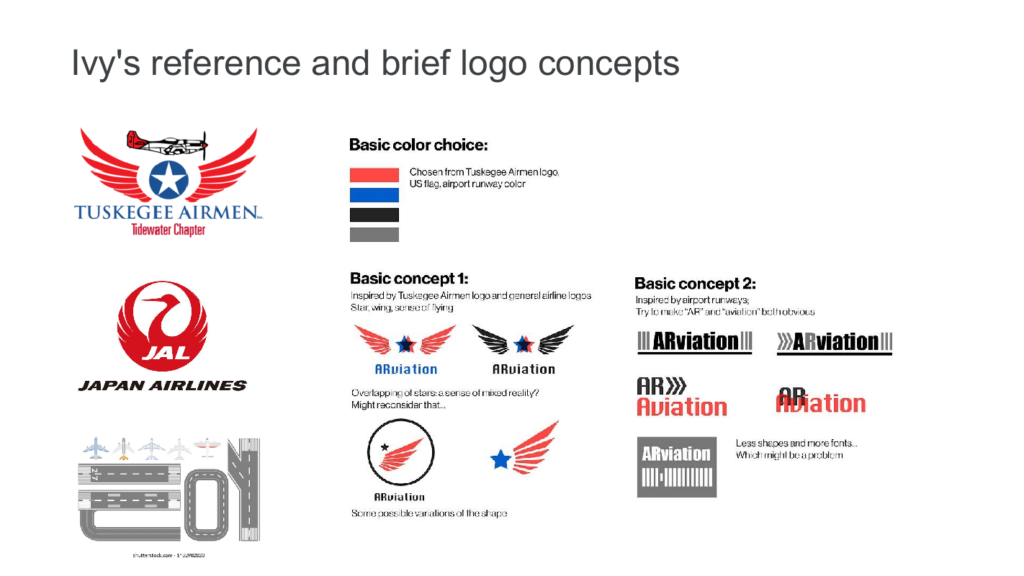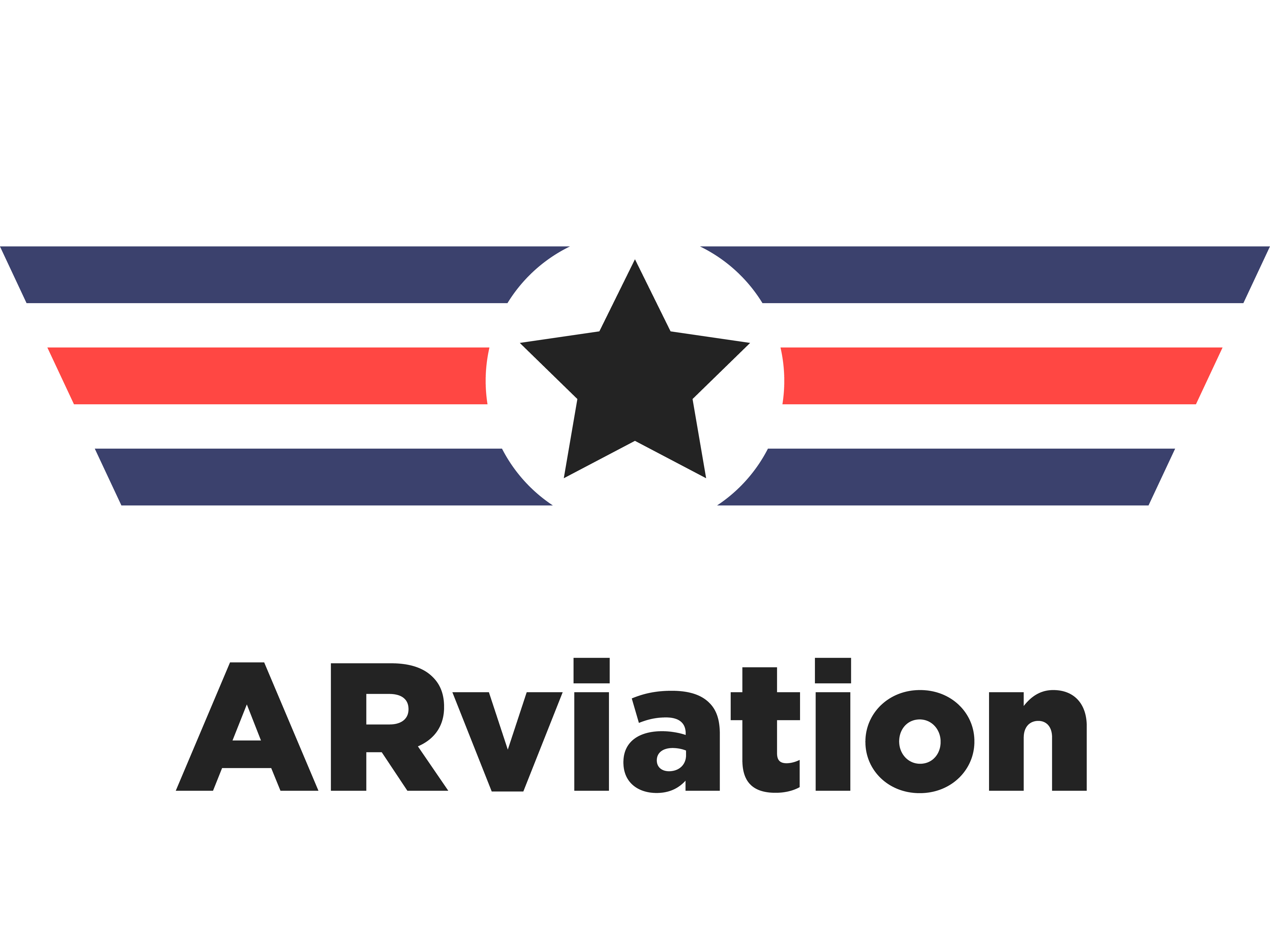ARviation’s first week consisted of lots of groundwork and learning: as a team, we learned about each other’s skills, past experiences, and learning goals; we met our instructors and learned about their expertise; and we met our clients, to learn about the museum exhibit they’re setting up, their goals, and prior experience with similar projects.
These meetings led to the foundations of our project, as we…
- Set up our roles, which you can checkout in our Team page.
- Decided that production responsibilities would be shared by our co-producers, Xiaoying and María. This will allow all of us to focus on our main learning goals (design, art, programming), given none of the team members had any strong inclinations to be the team’s sole producer.
- Scheduled weekly meetings with instructors and clients, thereby establishing constant contact with them for the development of the project.
- Defined initial project goals and began our research and brainstorming processes.
Takeaways From Meetings
Our first meeting with our project instructors – listed in our Team page – was crucial for us to understand the ETC semester project in general, in terms of its structure and steps to take. Our instructors also proved to be sources of guidance in regards to approaching this specific project. They led us to research relevant topics such as historical context, the science behind aviation, past ETC projects with MuseumLab, etc.
Equally, our first meeting with our client representatives – information on them can be found in our About page – was essential to our understanding of this specific project’s requirements in the context of an aviation exhibit at Hosanna House, designed by MuseumLab. We were also able to gage how much freedom we have in terms of creativity, which we were all thrilled about. Our clients gave us clearer information about the exhibition space, the purpose of the experience, the target demographics, etc.
In both meetings, the 2021 ETC project Amuseum was brought up as a helpful reference for our work, given its use of AR in a museum setting for children.
Research
Our initial research focused substantially on the P-51 Mustang, given that our clients’ original idea was to have an AR experience focused on showing this airplane model in full-size. During our first meeting, it became clear that a full-size P-51 can’t fit in the exhibition space, so the idea shifted towards showing the science and engineering related to aviation. The P-51 Mustang would be the vehicle to demonstrate this, so as a team we focused on learning about this airplane’s importance and history.
We found multiple sources of information on the P-51’s role during World War II, when it was developed and first used, and the connection between this model and the Tuskegee Airmen. This group of African-American pilots represent talent in aviation and perseverance in the face of racism. Therefore, our team veered towards the idea of creating an experience that heavily incorporates the Tuskegee Airmen’s story – this aligned perfectly with the goal of the Hosanna House and its upcoming exhibition of generating interest among minority students for the field of aviation.

Brainstorming
Our first brainstorming session was mainly guided by the P-51 Mustang, WWII and the Tuskegee Airmen, the space at Hosanna House (which we perceived as limited), and AR possibilities. We created a Google Jamboard file to share our ideas. The session led to defining initial goals and considerations as well, as a starting point for the project.

Design Production
Ivy, our UI designer and artist, also began the process of crafting the team logo – the intention is to have the logo define our team identity. Below is an image evidencing her design work, inspired by the Tuskegee Airmen, airline logos, and images of landing strips and airplane wings.

